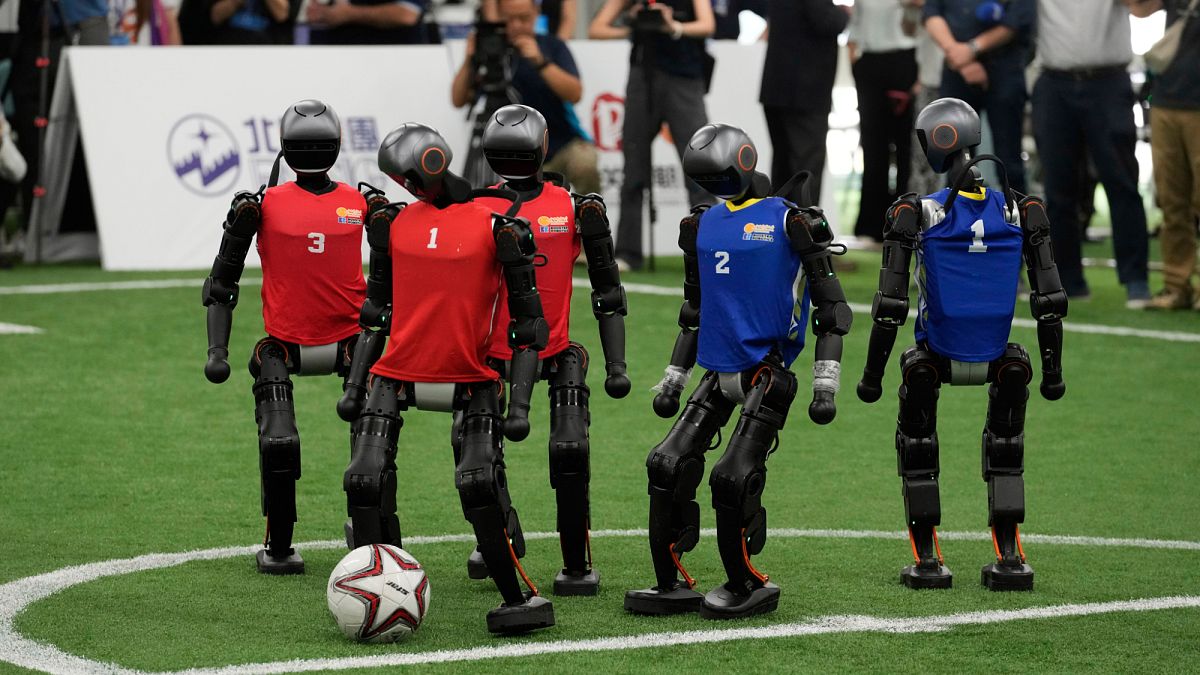

As humanity continues its extraordinary journey through technology and discovery, a confluence of advancements in robotics, transportation, space exploration, and environmental research marks a hopeful and innovative era.
In a remarkable demonstration of technological prowess, robots are set to showcase their abilities at the inaugural World Humanoid Robot Games. Set against the backdrop of the Beijing 2022 Winter Olympics speed skating venue from August 14th to 17th, these games bring together robotic teams from China and beyond. Participants are rigorously training and preparing for this event, which highlights the growing capabilities of AI-powered machines and their potential to perform complex human tasks. The World Humanoid Robot Games not only celebrate technological advancement but also foster international collaboration and competition, a reminder of the seamless blending of technology with human ingenuity.
Meanwhile, the evolution of autonomous vehicles continues to gain momentum. Lyft has announced a strategic partnership with Chinese AI firm Baidu to extend its revolutionary robotaxi service to Europe by 2026. By integrating Baidu’s cutting-edge autonomous driving technology, Lyft aims to introduce robotaxis in Germany and the United Kingdom, accessible through its app. This partnership underscores the shift towards sustainable, efficient, and convenient transportation solutions that promise to transform urban mobility and reduce carbon footprints across the globe.
Space exploration takes a giant leap forward as NASA announces plans for a nuclear reactor on the moon. This ambitious project is the first major initiative undertaken by the interim NASA administrator, who is concurrently serving as the U.S. Transportation Secretary. This endeavor signifies a pivotal moment in lunar exploration, presenting a sustainable energy resource that could support future missions and settlements on the moon. The innovation is certain to spark fascinating discussions and research on the potential for human habitation beyond Earth, nurturing dreams of limitless exploration.
In environmental research, a significant victory has been accomplished in understanding the devastating impact of a marine disease on sea star populations. Researchers have identified the bacterium responsible for the catastrophic wasting disease that has afflicted the sunflower sea star along the west coast of North America over the past decade. The bacterium, known as Vibrio pectenicida, has led to a 90% decline in the global population of this vital marine species. The identification of this microbial villain marks a turning point in conservation efforts and provides hope for mitigating the species’ decline and protecting marine biodiversity.
Together, these advancements illuminate a path forward in our understanding of technology, transportation, space, and ecology. Each development stands as a testament to human curiosity and determination, guiding us towards a future where innovation benefits all facets of life on Earth and beyond. From competitive robot games and futuristic transportation to groundbreaking space projects and crucial environmental research, the future is marked by a harmonious blend of technology with the essence of human progress.
Source: {link}
